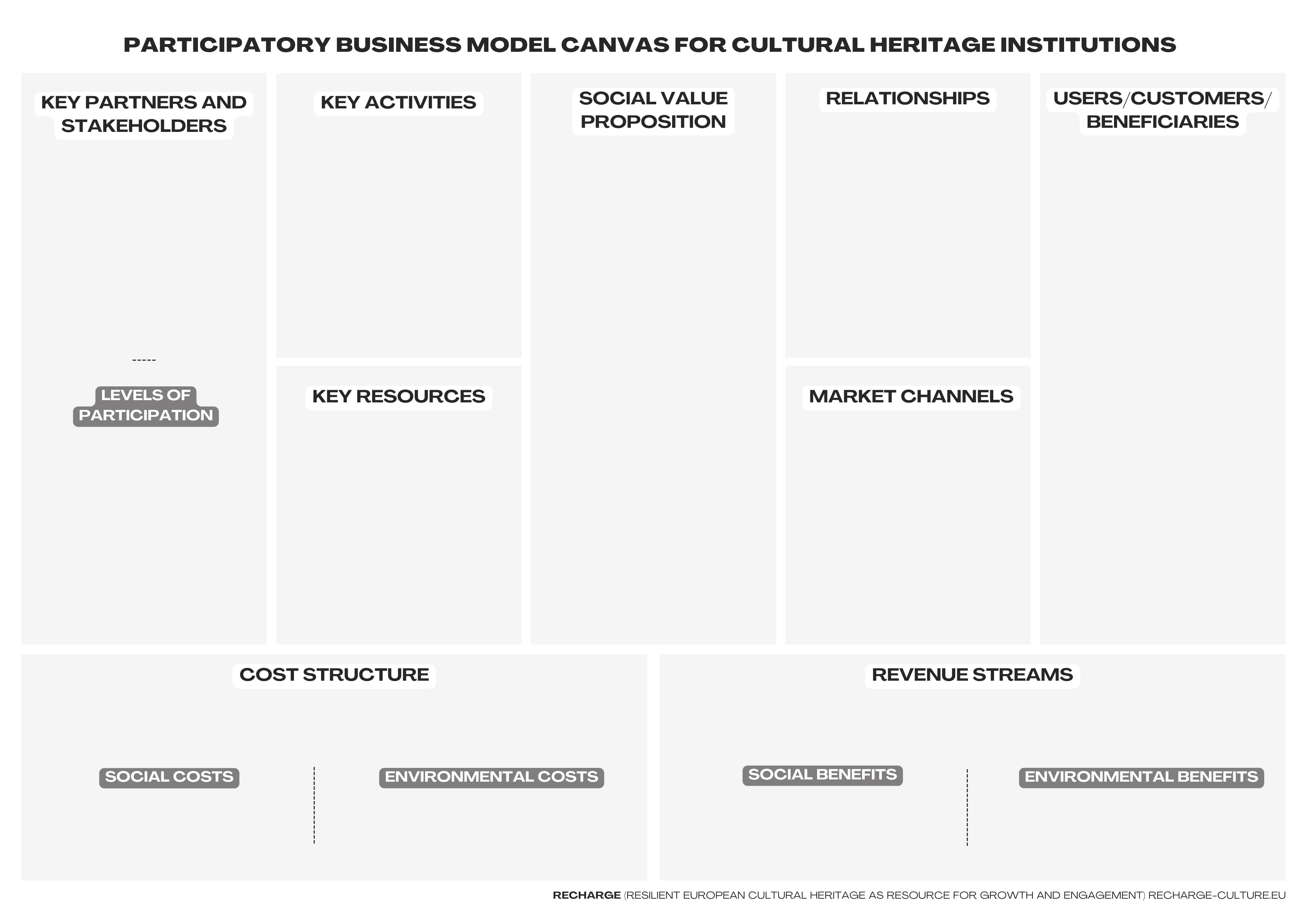Recharge Approach to Cultural Participatory Business Models
Perhaps you have worked with business models before and even used a business model canvas. What makes a Cultural Participatory Business Model different is the added layers of a participatory approach, a focus on social value, and the perspective of cultural heritage institutions. This includes a focus on social value proposition, and accounting for both social and environmental costs and benefits. By incorporating the perspectives of multiple actors throughout the collaboration process, stakeholders can present their needs and advocate for their shares of the benefits. Working in this way can contribute to the long-term sustainability of your initiative by strengthening inclusion and supporting democratic processes.
The Participatory Business Model Canvas (CPBM) can be useful in different ways, including:
- Highlighting the role of participation and engagement of different stakeholders throughout the entire business modelling;
- Linking different aspects of a business model into one coherent approach for cultural heritage institutions;
- Guiding the participatory innovation process in cultural institutions;
- Helping to communicate the participatory elements of the institution’s business plan.
This playbook proposes eight distinct participatory business models plus one hybrid model combining elements across different models. Each model represents different focus areas for business model innovation.


Share